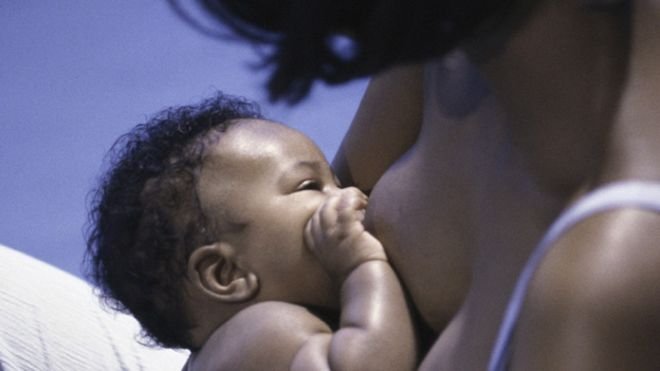Bus rides give me the thrills these days. You can not imagine the amount of knowledge a person can amass just from one trip. You meet different people operating at ‘unique moods’ and the experience will leave you marveled.
Relocating may not have been what I wanted, but it is fast becoming what I need. Deep questions I have had about life are beginning to find answers, and I couldn’t be happier. But this is not the case here, is it? So back to what I saw two days ago in one of my bus rides.
At quarter to six, I left my workplace and headed home. I was in a really sour mood when I got to the bus stop, and did not want to be disturbed. But this woman, the one sitting beside me, was in a really good mood. And she did not try to hide it. Even more endearing was her baby girl. The pretty little thing had happy eyes, and she smiled effortlessly.
I got into a chat with the two and was beginning to have a good time. I did not expect what happened next. At first, I thought she was jerking her baby in the usual motherly way. You know, the way mothers jerk their babies to make them laugh and all.
It was when I turned that it hit me. The poor woman was convulsing and the jerks were not the playful type. Her baby’s eyes were beginning to turn red from all the movement and hers had dilated already.
I alerted everyone else and the bus came to a stop. The baby was taken from her by one other woman and everyone alighted. They took her down and started tending to her; I had no idea what they were doing, as I have never been in this kind of situation before.
When my attention shifted, I noticed the baby was crying uncontrollably. Her happy eyes were soaked in tears and she won’t stop fighting. Someone suggested she be placed at her mother’s breast so she could suckle, another person disagreed immediately. He said we could not risk anything at that point.
Next thing we knew, the woman holding her unbuttoned and started feeding the crying baby! I wasn’t the only one who gasped. But two minutes later, everyone shifted their attention back to woman. The ambulance finally arrived and they moved her.
Back on the road, I had to ask why they did not say anything to the woman who breastfed another woman’s child. No one answered me. When no one answered me, I had to do my own research. What I found is what I’m going to share with you.
The old practice of wet-nursing
Breastfeeding another woman’s child is known as wet-nursing, and it is not a taboo. A wet nurse may have a healthy breast milk supply from breastfeeding her own child, or she may stimulate a supply of breast milk specifically for another woman’s child.
The practice of a woman breastfeeding a non-biological child is recommended in the World Health Organization/UNICEF Global Strategy on Infant and Young Child Feeding (2006) in situations where maternal breastfeeding is not possible. A review of medical, social/cultural and religious factors that support or hinder wet nursing was undertaken by Save the Children to understand how this recommendation can be applied.

Historical Perspectives
Before there were other ways to provide nutrition to babies (such as formula), breastfeeding was the only source of food for infants. If a mother was not able to breastfeed her child, that child would not survive. One way that women would get around this was by helping each other. Mothers who had enough breast milk would breastfeed their own children as well as other children who needed to be nursed. While women would often nurse the children of family and friends for no charge, many women were hired to breastfeed other children.
Also, throughout the late 19th to the early 20th century, poor women were hired to nurse the infants of wealthy women. The employment of wet nurses was desirable because it allowed mothers to sleep through the night or/and attend long-lasting social functions in which infants were not welcome. In contrast, the poor women hired as wet nurses would often neglect their own infants and bias nursing behavior toward “paying customers.”
Wet-nursing is still very much alive in many cultures throughout the world. However, in these paths, it has been fairly uncommon since the early 1900s. More and more women are now concerned about the health of their babies, and they take hygiene seriously.
READ ALSO: Taboos: A Strapped Baby Must Never Fall From Its Mother’s Back
Cultural contexts
The practice of wet-nursing is much more widespread among human populations than generally acknowledged. In the rural areas, mothers, and sisters don’t mind cross-nursing. As a matter of fact, it is expected of persons who share blood relations.
Within Islamic culture, there is the practice of “milk kinship.” In such instances, infants are nursed by a woman who is not their mother and consider her biological children “milk brothers and sisters” to the other ones.
Additionally, this practice has been reported to be routine among many other peoples including the Efe, Beng, and Aka in equatorial Africa, the Ongee of the Andaman Islands, and the Trobriand Islanders (Hrdy, 2009).
Results show that wet nursing has been widely practiced since 2000 years BCE and has historically been widely and positively accepted by society, culture and religion, although it has in some contexts been used as a form of slavery (ancient Rome and the southern United States during the 18th and early 19th centuries).
Since 1500, wet-nursing has mostly been practiced within close circles of families and friends to ensure child survival. It has declined as a practice with increased use of artificial feeding and marketing by formula manufacturers.
Factors to be considered
Factors identified in the review that facilitate wet-nursing include culture and religion; knowledge of the importance of breastmilk; when wet nurses and mothers/caregivers know each other; availability of milk-sharing websites; appropriate support from health facilities and authorities; access to lactation consultants or nurses equipped to provide support for wet nursing; and breast-milk screening.
Factors identified that hinder wet-nursing include availability and promotion of artificial feeding; fear of disease transmission; practical limitations for wet nurses (such as cost of travel); unwillingness to wet nurse outside known relationships; lack of facilities (milk banks; milk storage; pasteurisation); and lack of protocols and support from health authorities.
So, yes what I saw that day was not out of the ordinary. Now, I understand why I was given the cold treatment when I asked in the bus. My only concern for that unfortunate baby was the health status of the woman who “helped out”. I opine that, it is okay to help. Just ensure you are medically cleared to do so.
Please let me know what you know about wet-nursing in the comments section. How’s it is practiced at in your locality, and how long have you known about it?

